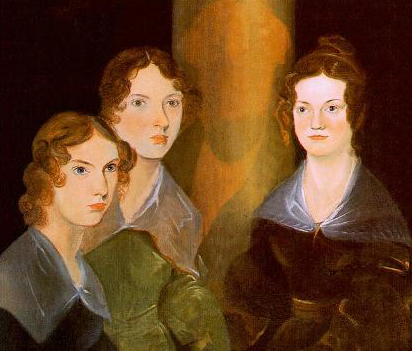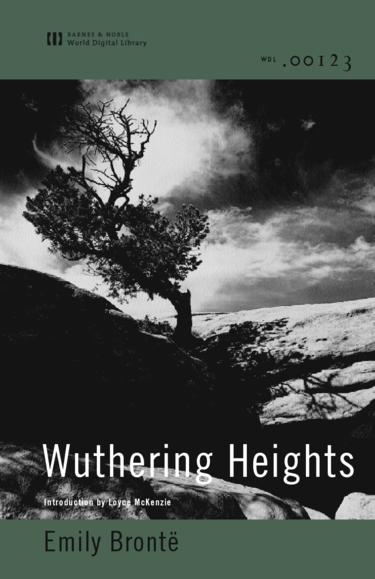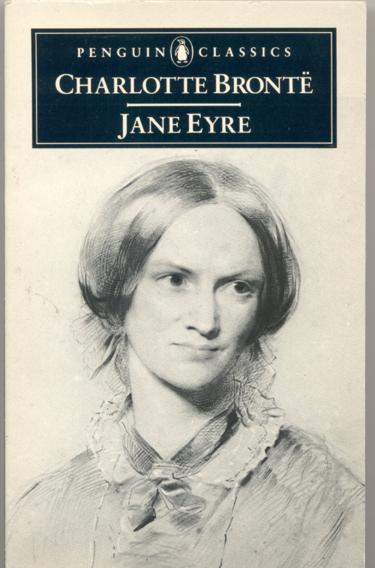Were the Bronte Sisters Raised as Vegans?
Here is the latest in a series of examinations into urban legends about novels and novelists and whether they are true or false. Click here to view an archive of the novel urban legends featured so far.
NOVEL URBAN LEGEND: The Brontë sisters were forbidden by the their father from eating meat.
The three Brontë sisters (not counting their two older sisters who died in their youth) were all novelists in the early 19th Century (here they are in a painting by their brother, Branwell)

The youngest, Anne, wrote a couple of novels, but her two sisters each wrote one of the most well-known and beloved novels of Western Literature.
The middle sister, Emily, wrote Wuthering Heights…

while the eldest, Charlotte, wrote Jane Eyre, which is one of the most popular novels of all-time (and was the most popular novel of the three sisters back then, as well).

Born over a stretch of four years between 1816 and 1820, all three sisters were dead by 1855, with the oldest of the three, Charlotte, living the longest (she died giving birth to her child at the age of 38 – both child and mother died).
What’s fascinating is that so much of the story of their life has been dictated by pretty much one biography, an 1857 biography of Charlotte, published two years after her death. Written by Elizabeth Gaskell, this bio formed the foundation for what the general public knew about the Brontës for over a century.
Which is fair enough, of course, except that Gaskell, as it turned out, was not a particularly faithful biographer!!
One of the more notable aspects of Charlotte’s life that Gaskell decided to ignore was the deep attraction that Charlotte had for Constantin Heger, the married man who ran the boarding school where both Charlotte and Emily taught (Charlotte taught English and Emily taught Music). Gaskell felt that such information would be too damaging to Charlotte’s reputation, especially since Charlotte’s father (and her husband, for that matter!) was still alive.
However, while I mention her father still being alive as a reason to spare the world unsavory details about Charlotte, Gaskell was really ONLY concerned about Charlotte’s reputation, since Charlotte actually invented negative stories about her father’s rearing of the girls (Patrick’s wife, Maria, the mother of the girls and Branwell, died in 1825) that do not reflect too well on him.
But it appears as though Patrick Bronte was willing to go along with the charade (he helped Gaskell with the biography – Patrick actually ended up outliving ALL of his six children – and he was thirty-nine when Charlotte was born!) because it appears that this was what Charlotte wanted (her sisters predeceased her, so they were not as concerned with their “legacy”).
You see, the reaction to the novels of the sisters involved a good deal of public interest, but also a goodly amount of public backlash against the somewhat unsavory nature of the novels, which were fairly controversial at the time. So the way to come up with an “excuse” of sorts for their novels, the sisters formulated the myth that they were raised in an extremely strict home and that they were just simple country women who did not know enough to be chastised.
That is one dedicated father. Allowing himself to be disparaged for the sake of his daughter’s reputation AFTER her death!
Gaskell ran with this approach, depicting the sisters home life as downright tragic. It was here that Gaskell introduced the notion that Patrick would not let the sisters eat meat – a notion that persisted for over a century, until modern scholars found references to the sisters writing in their journals about being served meat.
It’s truly fascinating to see how a myth was created about their lives.
Lucasta Miller unpacked almost all of these legends in her book about the sisters, The Brontë Myth…

It’s well worth a read.
The legend is…
STATUS: False
Feel free (heck, I implore you!) to write in with your suggestions for future urban legends columns! My e-mail address is bcronin@legendsrevealed.com






Charles Dodgson, AKA Lewis Carroll, had similar biographer problems. The family kept his papers sealed away for years so the fountainhead was a biography by one of his relatives that created the image of the shy neurotic who was only happy around children. It wasn’t true and may have been written to cover up that Dodgson’s relationships with women stirred up some scandal when he was alive (whether there was any fire behind the smoke is unknown).
Excellent point, Fraser. I was at a museum exhibition years ago (well, not THAT long ago, within the past ten years) where that very topic was spotlighted (how the general view of his life was shown to be mostly a fabrication).